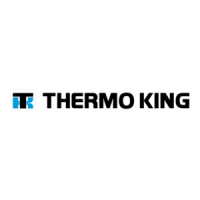Operator’s Manual
Operator’s Manual
Ingersoll Rand’s Climate Solutions sector delivers energy-effi cient HVACR solutions for
customers globally. Its world class brands include Thermo King, the leader in transport
temperature control and Trane, a provider of energy effi cient heating, ventilating and
air conditioning systems, building and contracting services, parts support and advanced
controls for commercial buildings and homes.
Ingersoll Rand’s Climate Solutions sector delivers energy-effi cient HVACR solutions for
customers globally. Its world class brands include Thermo King, the leader in transport
temperature control and Trane, a provider of energy effi cient heating, ventilating and
air conditioning systems, building and contracting services, parts support and advanced
controls for commercial buildings and homes.
©2012 Ingersoll-Rand Company
Printed in U.S.A.
©2012 Ingersoll-Rand Company
Printed in U.S.A.
Precedent
S-600 and S-700
TK 55538-2-OP (Rev. 3, 01/2014)
Precedent
S-600 and S-700
TK 55538-2-OP (Rev. 3, 01/2014)


